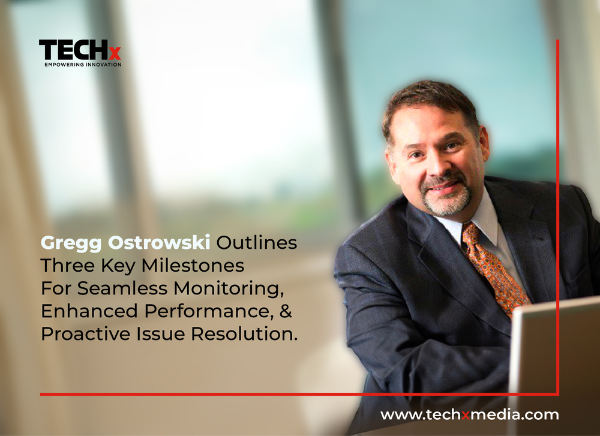
Applications are now the primary customer touchpoint for many organizations. McKinsey in its Digital Sentiment Survey found that in the UAE and Saudi Arabia, consumers use digital channels to interact with an average of 4.5 industries. Overall digital adoption — the average of users in each industry who have interacted with it through digital or remote channels — stands at 78%. With such a strong digital appetite, businesses know that any slip up in application performance can have catastrophic consequences, including a loss of customers, revenue, and reputation.
IT teams are logically tasked with delivering on digital expectations. But, far from being prepared and primed, many are suffering from ‘tool sprawl’, using separate and siloed monitoring solutions to manage different aspects of their IT estate — such as applications, network, and infrastructure.
Not only does this approach burden already overstretched IT resources, it fails to provide unified visibility across cloud native and on-premises environments, greatly complicating root cause analysis. And of course, this inability to isolate issues ultimately increases the likelihood of costly application downtime and disruption.
These shortcomings are being recognized and consequently a steady move away from application performance (APM) monitoring is now in progress. Indeed, Cisco research, found that for 85% of global technologists, the more favorable alternative — observability — is now a strategic priority for their organization.
The benefits of full-stack observability
Observability grants IT teams unified visibility into the availability, performance and security of their applications and down into core network and infrastructure. This allows them to monitor and manage performance in real-time, quickly pinpointing issues, mapping dependencies and applying fixes. Metrics such as Mean Time to Resolution (MTTR) improve, digital experience is optimized, and technologists can spend less time firefighting problems and more time innovating.
Of course, as any IT team that has implemented a migration would anticipate, the move from APM to full-stack observability will not be instantaneous. It’s a journey that takes time (often two to three years for large enterprises) and involves significant technical, cultural and structural change. The starting point for most organizations will be an existing APM approach, built around multiple monitoring tools, but every organization will take a different route to achieving observability, depending on its own specific business needs.
A platform approach is essential
To be able to steadily build their capabilities, organizations should start their observability journey by implementing an open and extensible platform. Such a platform also helps avoid the resistance otherwise associated with change. Tool consolidation can often meet real resistance from teams who are accustomed to using certain solutions and don’t like being told which tools they can and can’t use. But an open platform helps avoid this, as it can bring in and correlate signals from any tools.
Three milestones on the journey to observability
Though many paths may be followed on the journey from APM to full-stack observability, the most effective routes will all feature some key steps, each of which brings significant benefits to IT teams:
Expanding visibility across domains
While application performance may be the end objective, often the first step for organizations is to add infrastructure visibility (such as Kubernetes and hosted environments) and network visibility into their monitoring approach. Rather than just focusing on the application itself, IT teams can monitor the different domains that are required to make the application function. With this, they would be able to identify the domain specific area where a problem is occurring and bridge visibility gaps where application components are running across hybrid environments.
Building security into the monitoring strategy
In a landscape of ever evolving threats, security simply cannot be an afterthought. Successful journeys will therefore feature the integration of security monitoring into observability capabilities at early stages. Organizations can then ensure complete protection for applications, from development through to production, across code, containers, and Kubernetes.
With continuous runtime application self-protection (RASP), technologists can protect applications from the inside out, wherever they live and however they are deployed. They can see what is happening inside the code to prevent known exploits and simplify vulnerability fixes. Developers can generate targeted insights into their application environments that allow them to respond to threats at scale — whether that’s in containers, on-premises, or in the cloud — and integrate security throughout the entire application lifecycle.
This focus on integrating security with observability also enables much greater collaboration between security and application teams, facilitating the shift to DevSecOps methodologies.
Generating an end user view
To get a true sense of the usability and impact of their applications, organizations must be able to place themselves in the shoes of their customers. By implementing digital experience monitoring (DEM), organizations can start looking at application performance from the customer perspective, understanding and analyzing the experiences end users are enjoying when using an application or digital service. Functionality such as Session Replay enables IT teams to visualize how customers are behaving and engaging. DEM tends to be prioritized within industries that are very consumer-driven, such as retail and financial services. This is where delivering an optimized digital experience is crucial.
IT leaders must develop a holistic strategy for observability
As organizations embrace more cloud native applications, the shift to full-stack observability is gathering speed. Just as they would plan a journey carefully before setting off, IT leaders need to make sure they have the right strategy from the start. This means considering both cultural and process changes alongside implementing the observability platform.
But while a typical journey will have an endpoint, here’s where observability differs. There is never really an end to the journey to full-stack observability. As new technologies emerge, there will always be a need to add new layers of monitoring and visibility. Ultimately, this is why a platform approach is so beneficial, with open standards enabling organizations to plug in new tools and solutions as they emerge. In this way, observability provides the sound foundation for rapid and sustainable innovation — both now and well into the future.